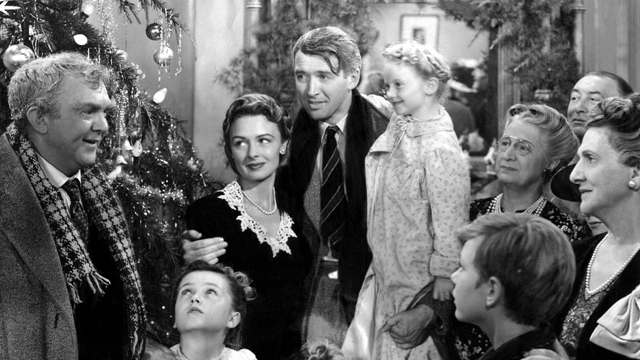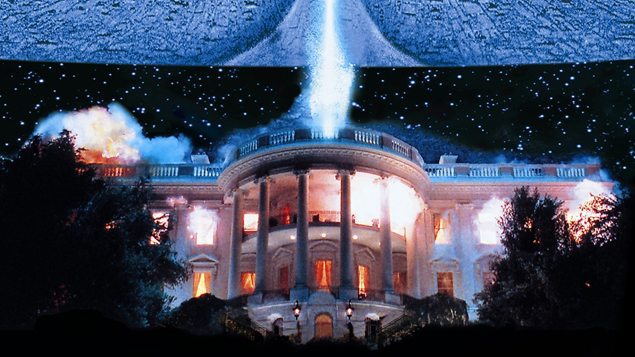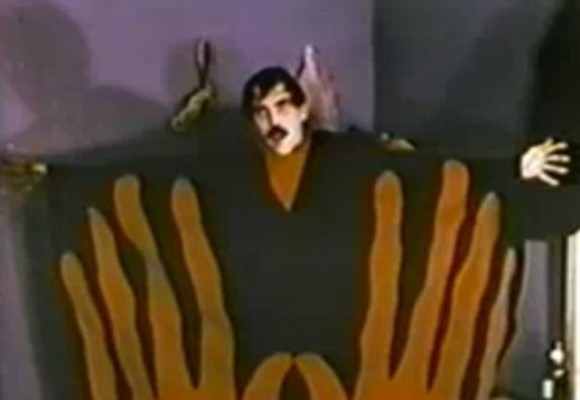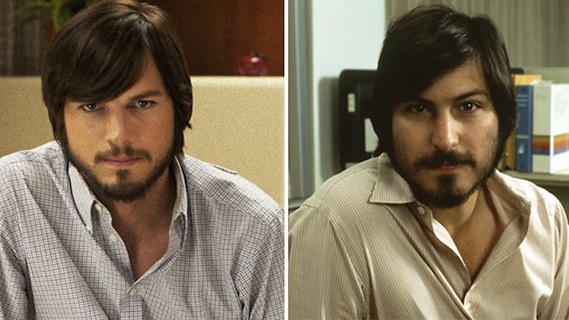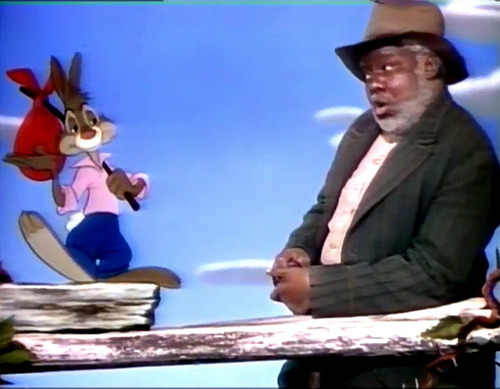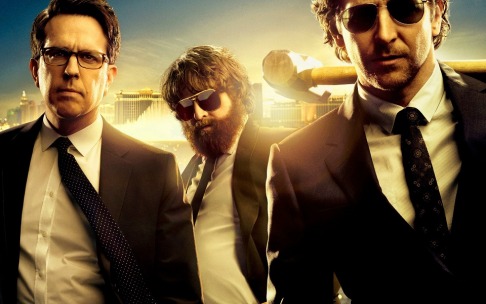We’ve reached the end of another calendar year and of course that can only mean that it’s Holiday season once again. Whether we are celebrating Christmas, or Hanukkah, or whatever, it’s a time of the year where we all gather together and honor family, tradition, and the gift of giving. What’s interesting about Christmastime, however, is just how much the holiday tradition is actually influenced and centered around Holiday themed movies. A Holiday film can pretty much be considered a genre all it’s own, since so many of them exist out there, and are created specifically to invoke the holiday spirit. Not only that, but they are movies that we continually return to every year around this same time, like it’s part of our holiday ritual. This doesn’t happen with every Christmas themed movie, however, since many of them try to hard to hit their mark and fail spectacularly. And yet, we see small films that no one thought much of at first grow into these perennial classics over time, and in some cases add to the overall Christmas mythos that defines the season. But, how do we as an audience discern the classics from all the rest? What really separates a Miracle on 34th Street from a Jingle all the Way? Quite simply, like with most other movies, it’s all determined by what we bring from our own experiences in life when we watch a movie.
The emergence of perennial holiday classics is nothing new in pop culture and actually predates the beginning of cinema by a good many years. Literature has contributed holiday themed stories in both short form and novels for the last couple hundred years, helping to both shape and reinvent Christmas traditions in a very secular fashion. Our modern day physical interpretation of Santa Claus can in fact be contributed to his appearance in “Twas the Night Before Christmas,” the 1823 poem by American author Clement Clarke Moore. Moore’s nearly 200 year poem is still being recited today and it shows just how much tradition plays a role in keeping a perennial classic alive in the public’s eye. Around the same time, acclaimed British novelist Charles Dickens wrote the story of A Christmas Carol, chronicling the tale of Ebenezer Scrooge and his visits by three ghosts on Christmas Eve. Since it’s original printing in 1843, A Christmas Carol has gone on to be one of the most re-adapted story-lines in history. Perhaps nearly a quarter of all holiday classics can claim to have been influenced by Dickens’ classic tale, where a dreary old cynic has his heart warmed by the holiday spirit. Dickens meant for his novel to be a meditation on greed and class inequality, but I have no doubt that he purposefully meant for Christmas traditions to be the healing influence in Scrooge’s reawakening. These stories continue to stand strong so many years later and it shows just how far back our culture began to value Christmas stories and songs as a part of the holiday tradition.
Even from the very outset of cinematic history we saw films carry on holiday themes. Both Twas the Night Before Christmas and A Christmas Carol provided inspiration for movie-makers many times, given their already beloved appeal, but some people in Hollywood also saw opportunities to add their own original holiday themed stories into the mix. When the studio system emerged, they were very well aware of the marketability of a holiday themes. After all, people usually visited movie theaters frequently during the cold winters, so why not play up the festive mood that everyone was already in. For the most part, movies celebrated Christmas more frequently in short segments than in full length story-lines in these early years; whether it was capitalizing on a new popular Christmas song in a lavish musical segment, or by portraying a Christmas celebration as part of larger arching narrative. Many people forget that one of the most popular Christmas tunes ever written, “Have Yourself a Merry Little Christmas,” wasn’t even from a Christmas themed movie; rather it came from the 1944 musical Meet Me in St. Louis. But eventually the Christmas season became such an influential part of our modern cultural tradition, that it would inspire films devoted entirely to the holiday spirit.
So, in the years since, we have seen Holiday films become standard practice in Hollywood. Every year, it’s inevitable to see a Christmas movie released in time for the holidays. Unfortunately, for most of them, Christmas movies very rarely achieve classic status. For every one that audiences grow an attachment to, there will be about a dozen more that will likely be forgotten by next December. Evidently, it seems like Hollywood’s approach to the holiday season is less carefully planned out than any other part of the year. Their approach seems to be throwing whatever has Christmas in the title up against the wall and seeing what sticks. Unfortunately, this has led to Christmas being more synonymous with bad movies than good. Some are well meaning films that fall short of their goal like the Vince Vaughn film Fred Claus (2007) or the odd but charming Santa Clause: The Movie (1985). And then there are ugly, shallow and distasteful films like Deck the Halls (2006), the Ben Affleck disaster Surviving Christmas (2004), or the deeply disturbing Michael Keaton film Jack Frost (1998), with the creepy as hell CG snowman. And the less said about the horrible 2000 How the Grinch Stole Christmas remake the better. Overall, it is very hard to make an honestly cherished holiday classic in Hollywood, and that’s mainly because the business just tries too hard. If you look closely, you’ll actually find that a beloved holiday classic may come from the unlikeliest of places.
This was definitely the case with what has become not just one of the best loved Christmas movies, but one of the best movies period; that film being Frank Capra’s It’s a Wonderful Life (1946). Capra’s movie tells the story of George Bailey (a flawless Jimmy Stewart), a man who has given so much back to his hometown and has gotten so little in return, reaching the verge of suicide due to his depression. Through the intervention of a guardian angel on Christmas Eve, George is shown what his life would have been like if he never lived and he rediscovers his value and purpose and as it turns out is finally rewarded by those whom he’s helped all his life on the following Christmas Day. The film is very uplifting and perfectly illustrates the true impact that the Christmas season has in our lives. With a theme like that, you would think that the movie was a smash hit when it was first released, but instead the movie was a colossal bomb. It bankrupted the company that made it and ruined Frank Capra’s directing career from then on. The focus on George Bailey’s increasing depression was probably too hard for audiences to take at the time, given that many soldiers were returning home after the end of WWII. Despite it’s initial failure, It’s a Wonderful Life managed to survive through TV airings which happened on, naturally, Christmas Eve and the film not only found it’s audience but it became a seasonal standard. To this day, It’s a Wonderful Life is still aired on network TV (the only classic era movie that still is), and audiences from every generation still embraces it warmly, no matter how old fashioned it may be. Pretty good legacy for a film that started off as a failure.
A holiday classic can come from an unlikely place like It’s a Wonderful Life, but for many, what is considered a classic is usually determined by their own tastes. That’s why some people find romantic comedies set around Christmastime to be considered a holiday classic. Case in point, the movie Love, Actually (2003) has grown into a beloved holiday classic, even though the themes in the movie are less about Christmas and more about the intertwining relationships between the characters. By standing out as a strong romantic film with a Christmas setting, it stands to see this film as being an example of two types of genres working together. Cult movie fans even have holiday classics that they cherish, like the weird campy film Santa Claus Conquers the Martians (1964), which can hold the distinction of being one of the worst movies ever made, and incredibly entertaining at the same time. And some people can even claim that Die Hard (1989) counts as a Christmas movie, because of it’s holiday setting. Pretty much it’s whatever we bring with us from our own experiences to the movies that determines what we consider to be entertaining. Like with how most people gravitate towards a movie based on their own interests, so too do we see that with Holiday films as well. Hollywood has in some cases picked up on this and has catered to select audiences at Christmastime with genre specific movies. Usually, it will take a consensus of a large audience to determine which ones will stand out as the undisputed classics.
I think where Hollywood hits it mark most often is when it comes to making a successful holiday film that appeals to the memories of our own experiences of Christmas. The film that I think hit a perfect bulls-eye in this regard, and stands as a true masterpiece of Christmas themed film-making, is the 1983 classic A Christmas Story. Directed by Bob Clark, and inspired by the auto-biographical stories of novelist Jean Shepherd, A Christmas Story perfectly captures the highs and lows of a young boy’s experience during the holiday season. Ralphie (Peter Billingsley) is a character who was relatable to any young boy growing up in small town America, myself included, and seeing how he tries so hard to manipulate his parents into getting him his dream present is something every child will identify with. Couple that with the hilarious performance of Darren McGavin as the Old Man and the iconic Leg Lamp, and you’ve got the very definition of a holiday classic. But, just like how A Christmas Story highlights good Christmas memories, we see classic films that also center around a disastrous Christmas experience as well. The best example of this would be the very funny and endlessly quotable National Lampoon’s Christmas Vacation (1989). We’ve had just as many Christmases like the Griswold family as we have like the Parker family from A Christmas Story, and Christmas Vacation just perfectly encapsulates all the bad things that happen at Christmas time, without ever losing the holiday spirit underneath. Not to mention its the last time we ever saw a funny performance out of Chevy Chase.
So, despite the low success rate, we as an audience still seem to find a classic seasonal favorite every in every generation. But how does Hollywood keep making bad Christmas movies every year despite the demanding tastes of the movie-going public rejecting all the junk they put out. I think it’s because the season itself is such an overwhelming cultural force, that most filmmakers don’t really care about the product they’re making, as long as it’s holiday themed and ready to capitalize on the mood of the period. When it comes down to it, a great holiday classic is not determined by how soaked up in the holiday spirit it is, but rather by how strong it story works. We keep watching It’s a Wonderful Life every year because of how inspirational George Bailey’s life story is, and not because of the Christmastime finale that has come to define it. In fact, the movie is not really about Christmas at all; it’s about the life of one man and his value to the world. Other Christmas movies usually become classics just because of a wintry setting, where the holiday is not even mentioned. And even films that subvert Christmas traditions, like 2003’s Bad Santa, have become genuine holiday classics to some people.
I, myself, love a good Christmas movie, and because I’m such an ardent appreciator of movies in general, these films have certainly become a part of my holiday tradition. I return to It’s a Wonderful Life and A Christmas Story every year and never get tired of them. And not a year will go by when I don’t at least drop one quotable line from Christmas Vacation during this season. I hope every generation gets their own perennial classic that will last for years to come. Just please; no more remakes or sequels. We all saw the backlash that an announcement of a sequel to It’s a Wonderful Life got recently. I only wish The Grinch and A Christmas Story had been spared the same fate. Like too much Christmas dinner, there can always be too much of a good thing when it comes to Christmas movies.
